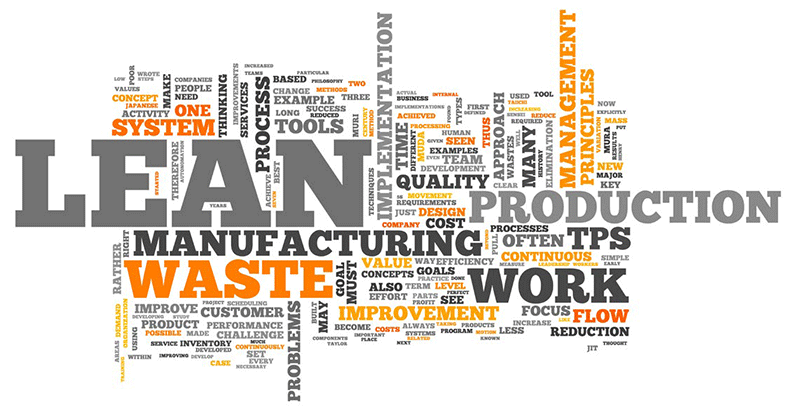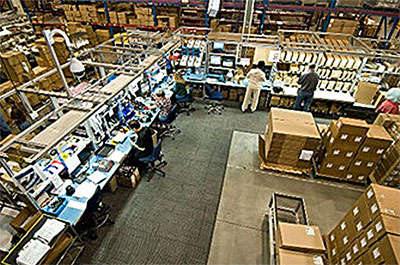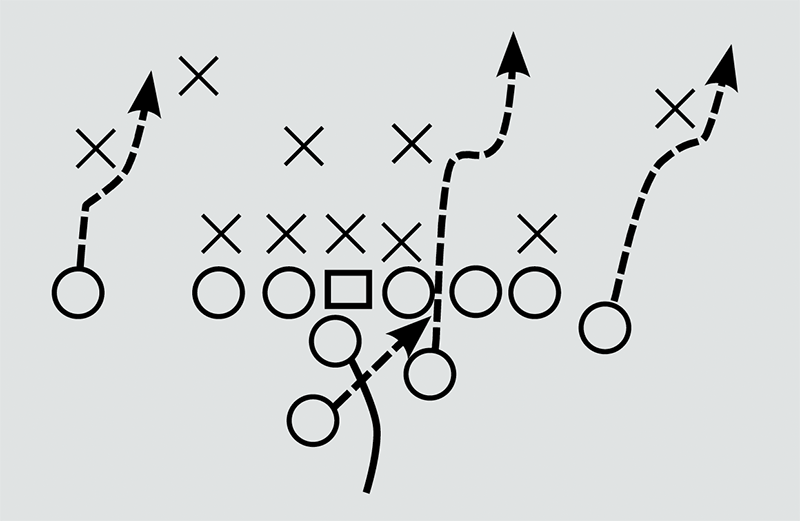Lean Manufacturing – Staying Ahead of the Curve
In an effort to stay ahead of the business automation curve, I took a week to attend a Lean Manufacturing class through a local college. The instructor identified 15 areas where the manufacturing process can be wasteful, and ways to streamline those processes. There were several manufacturing process simulations throughout the class.
One simulation was to build an airplane out of Legos. The goal was to build 15 airplanes in one day. Using traditional, or batch manufacturing processes, the group completed 5 airplanes in 3 days. After learning and implementing lean manufacturing techniques, the group had reduced “staff levels” from 6 people on the production line to 3 or 4, and were 98% on-time by the last day. This experience demonstrates how dramatically productivity, profitability, and customer satisfaction can improve.
Lean Manufacturing Processes:
- The 5 “S’s” which included cleaning out junk, keeping things simple, and keeping things in their place.
- Differentiation between pull systems vs. push systems to reduce inventory excess.
- Benefits of standardizing work to give a solid foundation for change. Discover ways to do it faster & better, in a way that is repeatable and creates a new standard.
- Mistake proofing:
- How to build a system that prevents mistakes vs. a checklist of things not to do.
- Example – every car that takes unleaded gas has a knockout that only lets an unleaded nozzle go in & unleaded nozzles are a standard size.
- How to build a system that prevents mistakes vs. a checklist of things not to do.
- Cellular design to group machines to create a smooth flow, and how to match production times between them.
- The KAIZEN Continuous Improvement Process advocates tackling the glaring problems first.
- It takes too much planning time to make everything ‘perfect’ at once. Get the immediate gain and then begin again.
My goal in taking this class was to develop a good understanding of how an ERP / MRP system fits into a lean organization, providing the BASM team the opportunity to be better business automation consultants. The class provided insight to see issues I may not have seen before, and demonstrated how simple changes cause big improvements. A one hour process converted to a 15 minute process, without any out-of-pocket expense, is a huge benefit to any company.
The Basic Principles of Lean Manufacturing
So, what is “Lean”? It is a simple and effective way of conducting business processes. It characterizes all activities as either value-added or non-value-added with the focus on eliminating non value-added activities (wastes).
Eliminate waste by employing simple principles. The Toyota Production System is Toyota’s unique implementation of Lean. Eiji Toyoda, founder of Toyota, took his inspiration from others and refined these ideas into the Toyota Production System. Toyoda greatly admired Henry Ford and in 1950 took a team of managers on a 12-week tour of US auto plants. He took the principles Henry Ford outlined in his two books (My Life and Work – 1923, and Today and Tomorrow – 1926), coupled them with Dr. W. Edward Deming’s (another American) Quality Management principles and with Taiichi Ohno, refined these concepts into the Toyota Production System.
The 5 Lean Principles:
- Specify value from the standpoint of the end customer
- Identify all the steps in the value stream and eliminate all non-value added activity
- Flow: Create flow for value-creating process steps
- Pull: Let customers pull value from upstream activity
- Pursue perfection through continuous improvement
The ultimate goal of lean is to eliminate the waste between the time of request and delivery by utilizing resources to do the work that our customer pays us for.
Why focus on lead time? By reducing lead time, you: improve productivity, reduce inventory, increase responsiveness, improve quality, reduce capital expenses, and improve delivery performance.
Don’t get bogged down chasing all of these objectives at once. Focus on lead time and you will see positive gains in all the metrics.
Identify & Eliminate Waste
Lean manufacturing focuses on producing exactly what the customer wants, when they want it, in the smallest possible quantities to gain efficiencies. You can achieve this when the processes have been designed for the workers success, as the worker is central to value creation. However, identifying and eliminating waste in the processes must first, which is often the most difficult step.
Seven Forms of Waste
One of the primary focuses of the Lean Manufacturing process is waste reduction. Waste comes from seven areas. Use the acronym ‘Tim Wood’ to remember the seven wastes:
- Transportation waste occurs when materials are moved from one place to another.
- This type of waste is caused by the inefficient layout of machines and factories. Any time a pallet jack, forklift or truck is used to move product from one location to another, this is classified as transportation waste. The result is non-value-added time between value added processes.
- Inventory waste: Raw material, work in process, and standing inventory are all non-value-added, and therefore, have the potential to create inventory waste.
- Excess inventory is the result of overproduction and it hides and creates other forms of waste.
- Example: Space is wasted when stock rooms are filled with finished goods. Having a full inventory can give a sense of security, however, your cash is tied up in your stock.
- Excess inventory is the result of overproduction and it hides and creates other forms of waste.
- Wasted motion: Any movement of a person’s body that does not add value is wasted motion.
- Extraneous lifting, walking or reaching can result in fatigue, injuries, wasted time and frustration. A Spaghetti Map outlines the flow and paths taken by people and materials throughout a facility. These maps help by quantifying distances traveled, identify bottlenecks, poor layout, workarounds and inefficiencies in the process.
- Waiting occurs when a person or machine must wait to do needed work.
- Typically, 99% of a product’s time is spent waiting. Waiting also occurs when a worker watches a machine run automatically.
- Waiting reduces productivity, interrupts the flow of materials through the value stream, increases lead time, negatively impacts delivery performance and adds expediting costs.
- Typically, 99% of a product’s time is spent waiting. Waiting also occurs when a worker watches a machine run automatically.
- Overproduction: Companies that overproduce a product before the customer wants it or produces more than the customer ordered.
- Overproduction adds lead time, reduces productivity and hides other waste forms. It enables defects and causes scrap, it must be eliminated to implement lean processes.
- Over processing: Processing waste is an operation that the customer does not pay for.
- This can include an extra operation to hold an unnecessary tolerance or to rework defective parts.
- “Just in case” operations, and over automation, are both ways a company creates processing waste.
- This can include an extra operation to hold an unnecessary tolerance or to rework defective parts.
- Defects result in scrap or rework and have the serious potential to lead to compromised customer expectations and poor delivery and productivity. Defects actually affect all of the other forms of waste and are often the result of not matching the process to the need.
Understanding the causes of waste will help you identify ways to reduce it.
Value Stream Mapping
Value Stream Mapping is a snapshot of the current state of a segment of the business at a 20,000 foot view. It helps to visually see where to tackle your next project improvements and challenges the paradigm of every member of your team.
The purpose of Current Value Stream Mapping is to understand the flow of your materials and information, as a result, expose both value-added and non-value added activities.
Material Flow Mapping shows the movement of all material from the raw material phase to the point of customer receipt. This involves inventory moves, production time and the movement of operators during the process.
Information Flow is the process that ensues between the customer’s initial call and the actual production launch. It outlines calls, faxes, emails and even foot traffic that has to occur before production begins. Both components are necessary when getting finished goods to your customers are made up of value-added activities (manufacturing the goods) and non-value added activities (running to get inventory before you begin the production run).
How do you get started with Value Stream Mapping?
- Identify one value stream or product family to explore fully.
- Select one that will have the biggest impact on your organization once optimized.
- Choose your team.
- The best choices are operators, supervisors, leads and engineers. Keep the same team on the value stream.
- Walk the process backwards.
- You will need a pencil (so you can make changes as you go), paper, and a stopwatch.
- Start with the shipping department and ask them, “What had to happen for you to get these finished goods to ship?” Observe and time them as they complete the shipping step, then move to the previous step.
- By moving backwards you are more likely to identify non-value added activities because you are not repeating a process by rote. You will be examining it as it occurs.
Non-Value Added Are Easily Identified
Once the non-value added activities become apparent, develop a Future Value Stream with all non-value added activities removed. Most non-value added activities fall into the following categories: Scrap rate, lead time, change-over and excessive inventory. By eradicating these items you will see how lean your manufacturing process can be. The Future Stream will provide a goal but it will also reveal the gaps between your current and future value stream. These gaps will give you solid goals and an actionable plan. Create high level metrics so that you can be sure that your efforts are making an impact on the organization.
Value Stream Mapping helps you to create a vision of what is possible and challenges the current paradigms of your organization. The exercise will result in an actionable plan that is easy to communicate with all of the members of your team.
Everything in Its Place – the 5 S’s
The 5 S’s lean manufacturing concept was introduced in Japan and revolutionized the way manufacturing facilities are organized.
While the undertaking may seem daunting, the results are well worth it. The ‘5 S’s’ reduce frustration, decrease the likelihood of defects and create a safer, more productive work environment. The first three S’s involve general housekeeping and organization. The last two focus on the expectations that your staff will maintain that level of order.
The five components of the “5S’s” methodology: Sort, Showcase, Set-in-Order, Standardize and Sustain.
- Sort: The first step is to evaluate what you have.
- Mark some empty floor space off with tape and label it into three categories: Tools to do the job, Inventory (raw materials, Work in Progress (WIP), and finished goods) and Area Support (brooms, trashcans, etc.).
- Once you have handled, evaluated and placed every item in the appropriate category, sort them by frequency of use.
- Place a red tag on any items that are of no use to that workstation, and then move them to a “Red Tag” area.
- Sort the red tag area into categories. Decide if another department can use an item or should you auction, sell, donate or throw away the item. This ensures you only have the tools you absolutely need at each workstation.
- Showcase: The showcase step is simple – Get things clean!
- Once you have removed all the tools, deep clean the tabletops and even the machinery until it shines.
- Paint things in a lighter color and bring in better lighting. Make the environment a place to be proud of. Create a space you would be excited to show a customer if they stopped by.
- Set-in-Order: We’ve all heard the expression, “everything has a place”. Determine a place for each component needed for that operation.
- Determine the best way to store the items. Small storage bins that stack on a tabletop may be best for small components while a pegboard would be perfect for tool storage.
- Restrict the use of drawers and toolboxes because the items are not visible to the operator and often become a catchall for items that don’t seem to have a place.
- Arrange the tools and equipment in order of the operation.
- Make it simple for the operator by keeping the most commonly used items close to them.
- Standardize: Once everything is in its place, post simple visual cues at each workstation so that the operators know exactly where each item goes.
- Print out a picture of the workstation in perfect order, laminate it and hang it at the workstation.
- Outline each tool on the pegboard to create a shadow and make it clear when something is missing.
- Color code item groupings and clearly label each bin.
- Test your system by bringing in an outsider and ask them to put items away. If they can do it without assistance, you have accomplished your goal of standardization!
- The idea is to make it simple for anyone to know where something goes and if something is missing.
- Sustain: Keeping the environment clean and organized takes a commitment of staff and management alike.
- Be Consistent: Address EVERY infraction so that workers know that management is serious about keeping things neat.
- Be Persistent: New behaviors take 30 days to become habit. Don’t give up too soon!
- Be Assured: This will soon become part of the natural flow of their day and your workers will maintain it without difficulty.
The 5 S’s can actually be applied to any environment, work or home.
Setup Reduction – Gain Valuable Production Time
Setup reduction eliminates wasted time and resources, while gaining valuable production time. While in the manufacturing setup mode you are not producing a sellable product for your Customer. By improving setups, you increase your ability to run more sellable product and delay the purchase of additional, expensive capital equipment.
For many years, it was common for companies to ignore the fact that setups can, and should be, reduced. To compensate for long setups, a company would “amortize” the setups over long runs of product. Producing long runs made two things happen: 1. Overproduction of some products, and 2. Delay in production for the product they had orders for (Waiting).
Setups in many companies have been reduced by 50% each time the process is followed by implementing setup reduction strategies.
For Example:
A powder coat system initially took 35 minutes to change over. The first setup reduction event reduced the setup time to 15 minutes. The second setup reduction event took 7 minutes, after the third setup reduction event it took 3 minutes, and after the fourth and final setup reduction event it took 80 seconds to change over.
Setup reduction doesn’t require a large capital investment. The powder coat system incurred a one time expense (investment) of $500 to make those improvements.
Longer Setups’ Cause More Scrap
The majority of setup time on equipment is spent running a product, adjusting the machine, running another product, adjusting the machine, and so on. While running these “test” or “setup” products, companies create scrap or rework.
A good measure for setup reduction is “First Pass Yield” (FPY) of the setup. What percentage of the time is the first part ran, a good part? Most processes prior to setup reduction have less than 10% setup first pass yield. Many times it is zero.
Setup is 100% Waste
While in setup, you are not producing products you can sell to your Customer. Setups are “necessary” to produce the myriad of products/services for your Customer, it’s still waste and needs to be reduced. Even if you charge your Customer (and they actually pay you) for a setup, it is still waste. Look at it as a prime opportunity to increase your margin on setups and make more money. Additionally, you position yourself well in the future to be more competitive.
Bottleneck Processes
One cause of bottleneck processes is the demand exceeds the capacity of the process. The way to fix this bottleneck would be to create more capacity. Capacity is expressed as available run time X the production rate. The solution is to reduce setup time, increasing available run time. Increasing available run time increases capacity, thus meeting the demand without additional capital expenditure.
Non-Bottleneck Processes
A non-bottleneck process is the need for more flexibility for mixed-model production. Reducing setup time allows you to increase the number of setups per period, creating the opportunity for smaller batch sizes and more flexibility. The result is that daily model mix production is now possible. This creates a competitive advantage in your ability to be flexible, meet customer demand, and have shorter lead times.
Setup Reduction Basics
The main objective of setup reduction isn’t to achieve a certain percentage reduction in setup time, it’s to enable a specific manufacturing goal! However, reducing setup time produces added benefits, including:
- Reduces the defect rate. The larger the batch size, the higher chance a defect passes through unnoticed.
- With larger batches, the operator spends more time sorting through the lot to find where the defect occurred.
- Eliminating adjustments as part of the setup, means the first piece is a good piece every time.
- Reduces inventory cost.
- Produce daily batches, or less, and recover square footage.
- Increases production flexibility.
- Enables average daily production which is more responsive to customer orders.
- Improves on-time delivery.
- Increases capacity to meet customer demand and shortens production lead time for mixed-model production.
- Keeps Value Stream Moving.
- Reducing setups keeps your Value Streams producing value for your Customer
Taking a hard look at setup reduction can produce a quantifiable value on your bottom line.
At BASM, our goal is to understand the principles behind lean manufacturing so we can help you better maximize your automation systems. Together we can help your company refine processes






